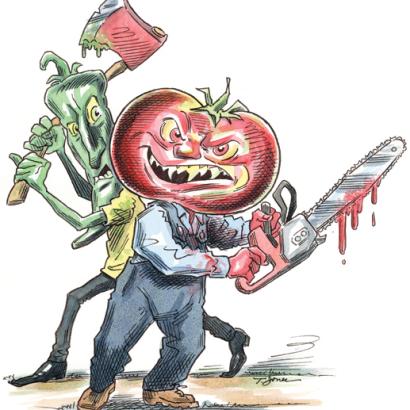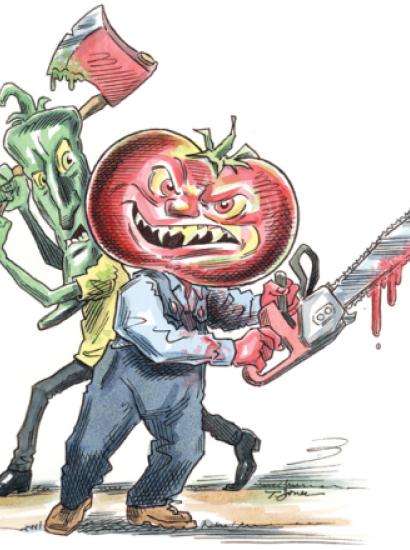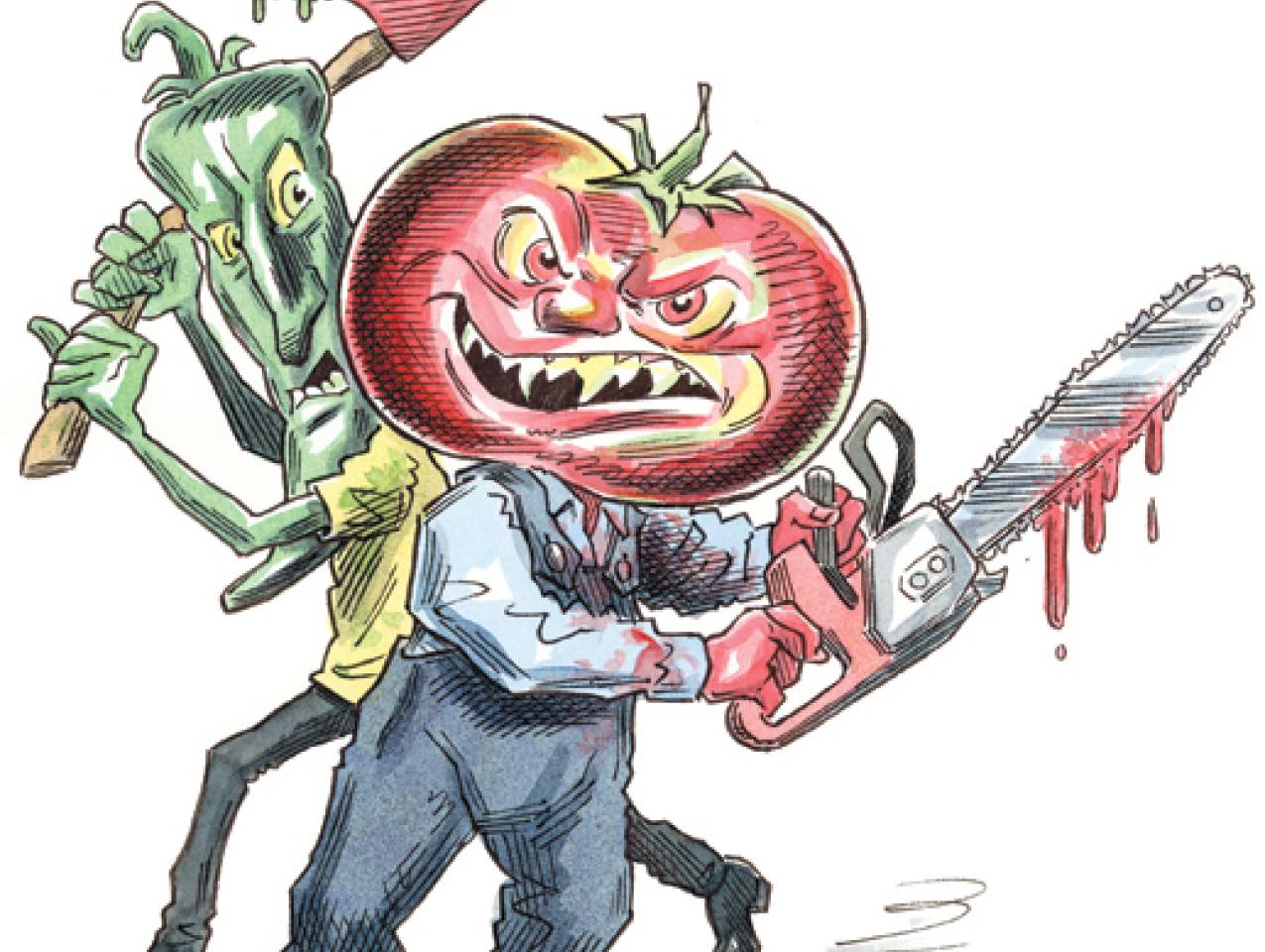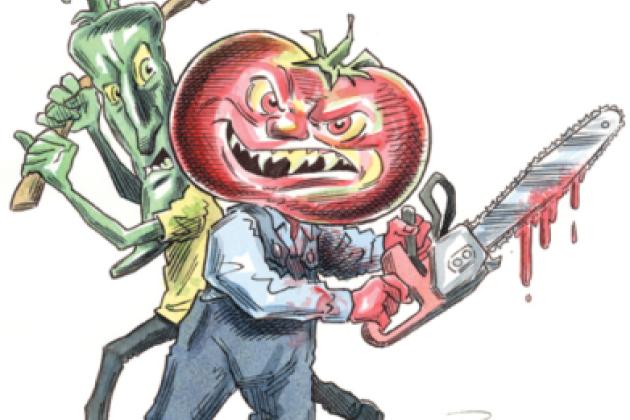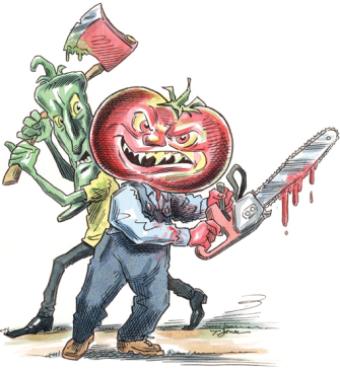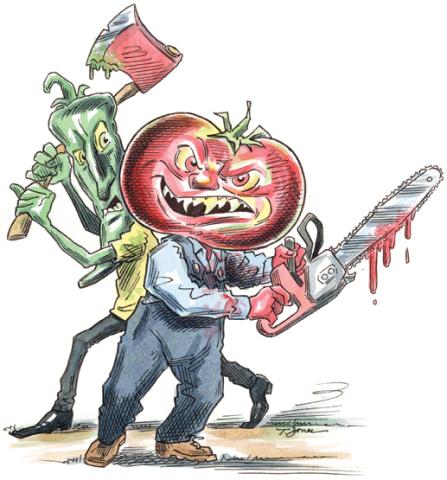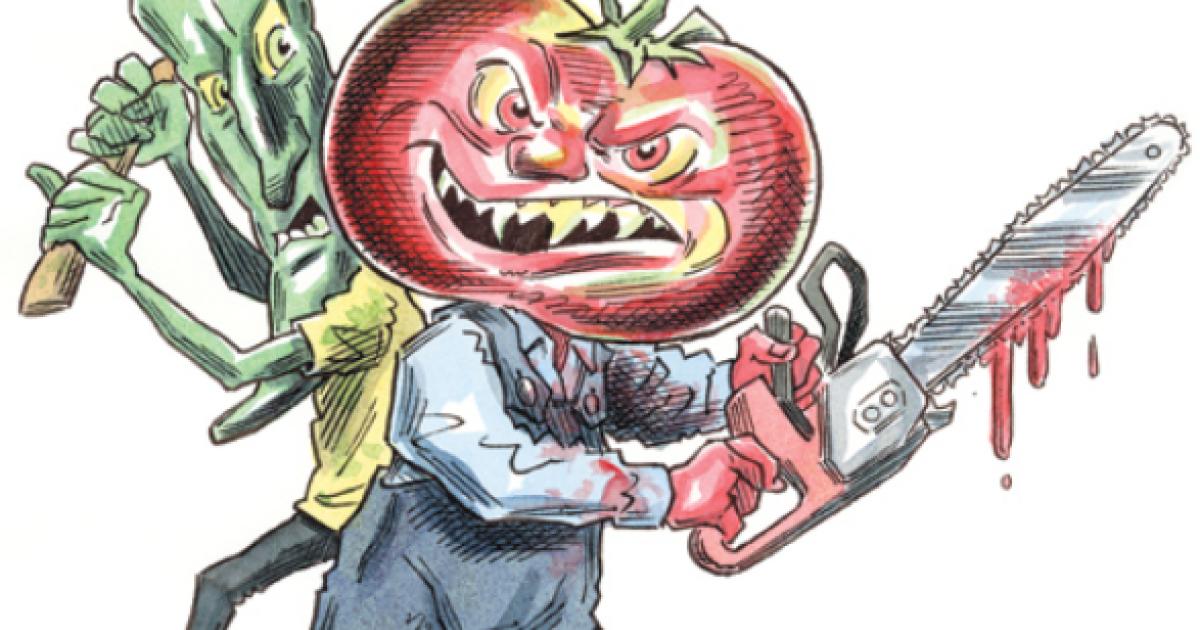- Law & Policy
- Regulation & Property Rights
- Energy & Environment
- Health Care
- Science & Technology
- Economics
Last summer witnessed an outbreak of food poisoning linked to a bacterium called Salmonella saintpaul. Raw tomatoes were blamed at first. By the start of August, 1,304 people in 43 states, the District of Columbia, and Canada had been sickened, according to the Centers for Disease Control and Prevention (CDC), and at least 252 of them had been sent to the hospital. McDonald’s, Burger King, Wal-Mart, and other restaurants and supermarkets pulled tomatoes from their sandwiches and shelves for a time before getting the all-clear. Then the plot thickened—heated up might be a better metaphor—when new evidence appeared instead to implicate fresh jalapeño and serrano peppers from Mexico.
This is not a new problem: a search for “Salmonella tomatoes” on the CDC website yields 280 hits, many going back more than a decade and all predating the current outbreak. As is the case for many fruits and vegetables eaten raw, tomatoes can harbor potential pathogens, including various strains of Salmonella. In 2006, two high-profile outbreaks of E. coli−related illnesses traced to spinach and lettuce, respectively, received wide publicity. The casualties: three deaths and approximately 300 illnesses nationwide.
These incidents are only the tip of a vast iceberg. Each year, food contaminated with microorganisms is responsible for 76 million cases of food poisoning and 5,000 deaths in the United States, according to government estimates. Food-borne infections are most often caused by the bacteria Campylobacter, Salmonella, and E. coli 0157:H7, and by caliciviruses, also known as the Norwalk and Norwalk-like viruses. (These organisms cause a syndrome consisting of fever, diarrhea, and abdominal cramps; although sometimes dubbed “stomach flu,” that is a misnomer because none of these organisms is related to the influenza virus.)
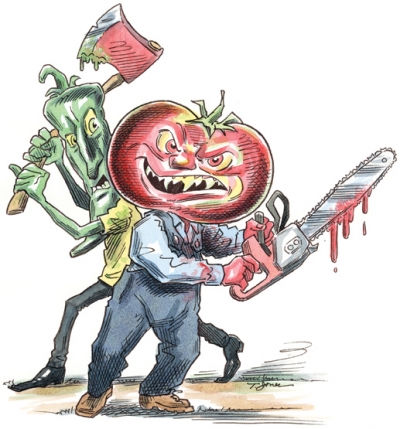
What can protect us from future outbreaks of contamination and foodborne illness?
First, it’s clear that growers of fresh produce can’t always protect us. Modern farming operations—especially the larger ones—already employ strict standards and safeguards designed to keep food free of pathogens. And most often they work: Americans’ food is not only the least expensive but also the safest in the history of humankind. The vast majority of cases of food poisoning result from consumers’ improper handling of food—in particular, from inadequately cooking chicken or permitting the juices from raw poultry to contaminate other foods.
Because agriculture is an outdoor activity and subject to all manner of unpredictable challenges, there are limits to how safe we can make it. If the goal is to make a cultivated field completely safe from microbial contamination, the only definitive solution is to pave it over and build a parking lot on it. But we’d only be trading very rare agricultural mishaps for fenderbenders.
It has also become painfully clear that we can’t rely on processors to remove the pathogens from food in every case. The 2006 spinach- and lettuce- based outbreaks of illness demonstrated that our faith in processor labels such as “triple washed” and “ready to eat” must be tempered with at least a little skepticism. Processors were quick to proclaim the cleanliness of their own operations and deflect blame toward growers. But all of those in the food chain share responsibility for food safety and quality.
In fairness to processors, there is ample evidence to suggest that no amount of washing will rid produce of all pathogens. The reason is that the contamination may occur not on the plant but in it. Exposure to Salmonella, E. coli, or other microorganisms at key stages of the growing process may allow them to be introduced into the plant’s vascular system.
Citing this, advocates of food irradiation have claimed that their technology can provide the assurance consumers demand. To be sure, irradiation is an important tool to promote food safety and is vastly underused, largely because of opposition from the organic food lobby and government overregulation. “If even 50 percent of meat and poultry consumed in the United States were irradiated, the potential impact of food-borne disease would be a reduction [of ] 900,000 cases and 300 deaths,” according to Michael Osterholm, director of the Center for Infectious Disease Research at the University of Minnesota.
Various other technologies can destroy certain pathogens present in or on food. One is “high-pressure processing” (HPP), which in effect smashes and kills the microorganisms. The technology works best for water-packed foods with few air pockets. The food is put in a container and pressure is applied evenly to all sides.
Foods treated by high-pressure processing already on the market include raw oysters treated to kill the Vibrio germs that proliferate in warmer waters.
But HPP and irradiation offer no panacea. Although they may quite effectively kill the bacteria, the processes don’t inactivate the potent toxins secreted by certain bacteria such as Staphylococcus aureus and Clostridium botulinum. The toxins can cause serious illness or death even in the absence of the bacteria—a fact certain to be appreciated by anyone who ingests food contaminated with them.
So, if consumers can’t be protected by growers or processors or even irradiation, what can protect them?
There is technology available today that in theory could both inhibit microorganisms’ ability to grow within plant cells and block the synthesis of the bacterial toxins. This same technology can be employed to produce antibodies that can be administered to infected patients to neutralize the toxins and can even be used to produce therapeutic proteins (such as lactoferrin and lysozyme) that are safe and effective treatments for diarrhea, the primary symptom of food poisoning.
But don’t expect your favorite organic producer to embrace this triplethreat technology, even if it would keep his customers from getting sick. Why? The technology in question is gene-splicing (also known as “genetic modification” or GM)—an advance the organic lobby has repeatedly vilified and rejected.
For organic marketers, the irony is more bitter than fresh-picked radicchio. The proven technology that affords them the best method of safeguarding their customers is the one they have fought hardest to forestall and confound.
In the wake of the recent Salmonella contamination, will the organic lobby rethink its opposition to biotechnology? Will it begin to appreciate the ways in which this technology can save lives and advance their industry? Will it permit science, common sense, and decency to trump ideology?
I’m not betting the farm.








